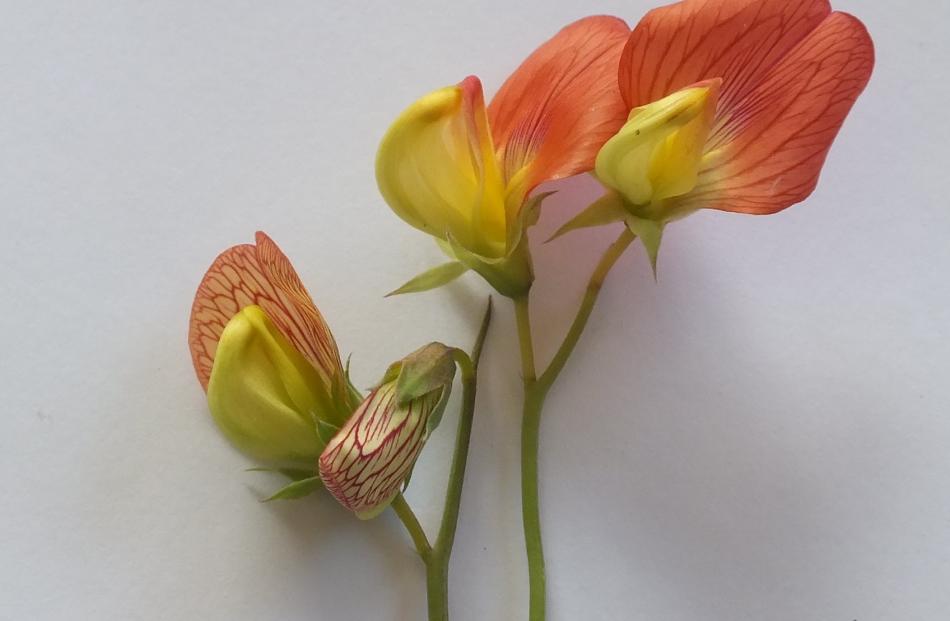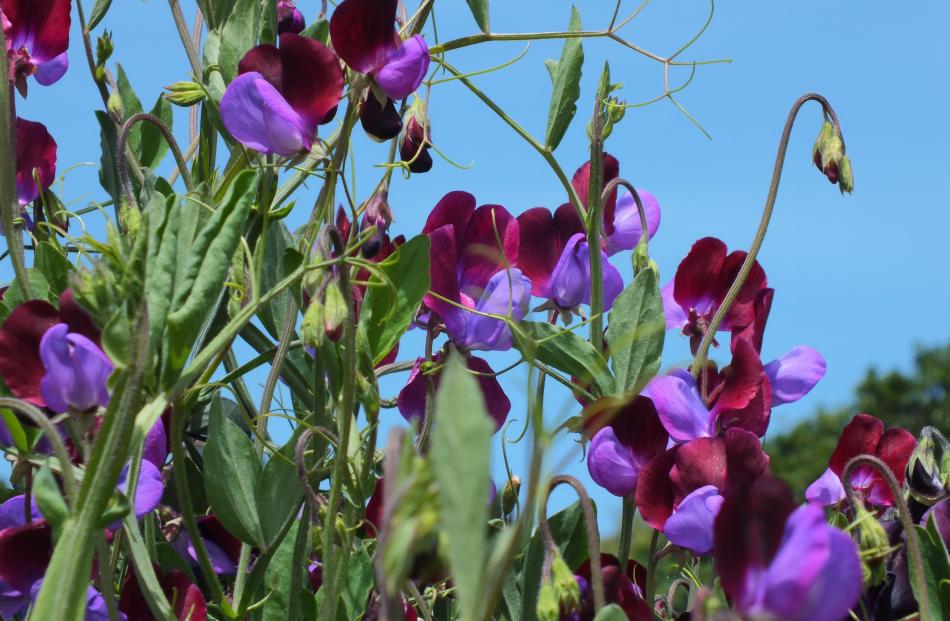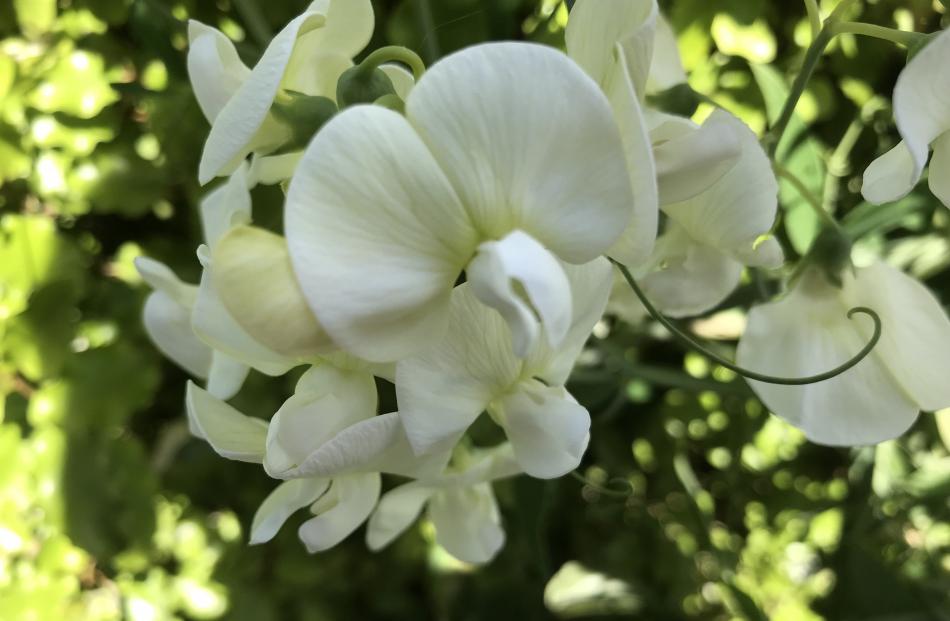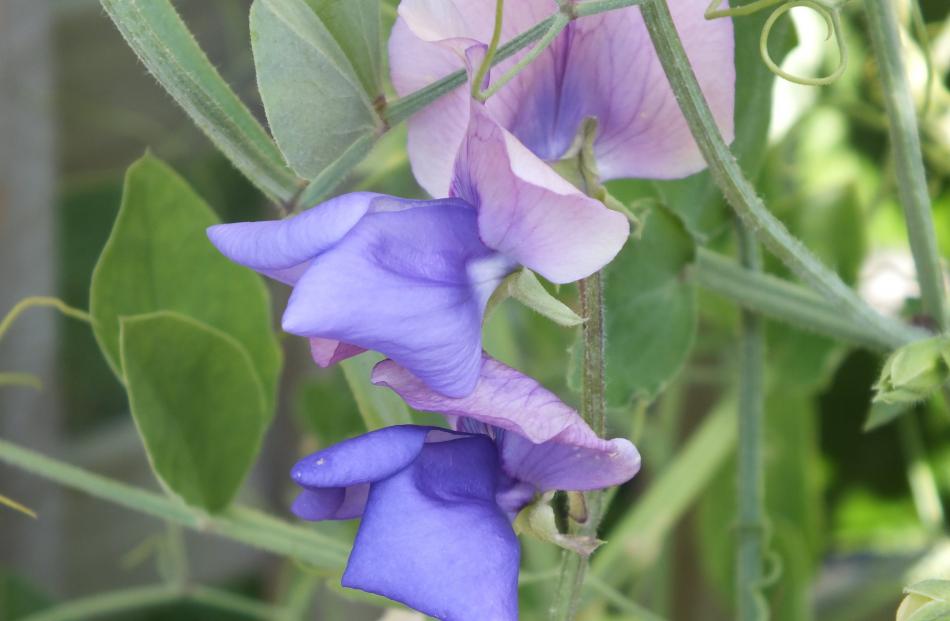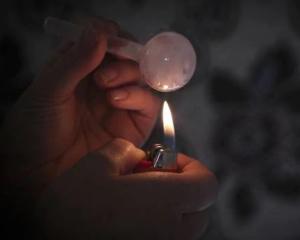Last week, I spent an enjoyable evening at the North Otago Garden Club’s monthly meeting.
One of the highlights was Marise Martin’s lively and informative presentation on what gardeners should be doing this month.
"I’m making comfrey tea before the comfrey goes to ground. Tear or cut the leaves, and push into empty milk bottles, fill with water and cap," she told club members.
Bottles of maturing tea were stored behind her shed, ready to be used at any time.
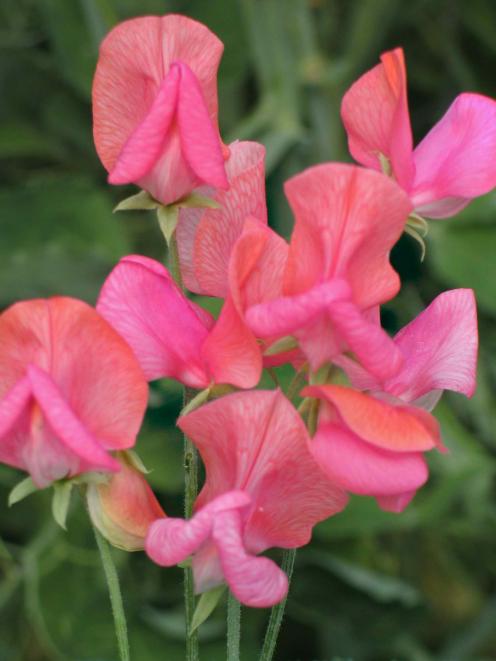
Marise did sound a note of caution, saying: "Only use freshly made comfrey tea indoors, though, as the mature tea pongs. Trust me on this!"
St Patrick’s Day this Sunday is an important date for gardeners, Marise explains.
"I’ll be planting my sweet pea seed again on St Patrick’s Day — this ensures you have very early blooms," she said.
This tip was new to me, so on Sunday, I’ll be out in my green T-shirt, sowing sweet peas in a sunny, rather dry, spot against a north-facing fence.
First, though, the ground will need to be enriched because, as Marise put it, "Sweet peas are big feeders."
That means being generous with the chicken-and-sheep pellets I’ve been using successfully in the vegetable garden and making sure the ground stays moist over the growing season.
Seedlings would almost stop growing over winter, Marise said, but as soon as the soil started to warm up, her sweet peas would take off. Doubtless her neighbours are pea green with envy.
Don’t be tempted to eat sweet peas, which are toxic. Garden peas (Pisum sativum) are derived from a different branch (genus) of the legume family (Fabaceae) and the two types do not cross.
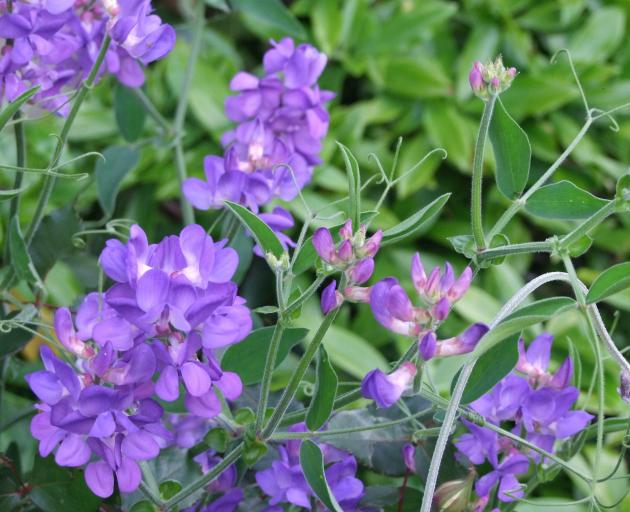
There are couple of other species to consider. Despite it being virtually unscented, I’m a fan of soft blue Lord Anson’s pea (L. nervosus), a perennial South American species which can be grown as a ground cover or in pots. The Tangier pea is an annual unscented species, with cerise-violet flowers. It comes from the Mediterranean and has been in New Zealand for a long time, naturalised in some areas since the 1940s.
Of the named sweet peas available, most derive from strongly perfumed L. odoratus, a native of southern Italy and Sicily. Purple bicolour "Cupani", sent to England in 1699, is said to most resemble the original. "Matucana" is very similar but has four flowers on a stem, not two as "Cupani" does. They are still sold, as is "Painted Lady" (1737), a two-toned pink.
In England, Henry Eckford began breeding new varieties from about 1880 with trial fields at Wem, in Shropshire, which still celebrates his work with an annual sweet pea festival. By 1901, Eckford had introduced 115 new varieties, about half the total of named cultivars then on the market.
We don’t have anything like that number now but, thanks to breeder Keith Hammett, of Auckland, we do have plenty of choices, including the world’s first reverse bicolour, with the upright petals lighter than the lower ones. It took him 30 years to develop the striking "Erewhon", well worth a place in any garden.
Sweet peas come in almost every colour except pure yellow, Dr Hammett is working on this, using orange-and-yellow L. belinensis, discovered in Turkey in 1987, and other species. His "Primrose" is a cross between L. belinensis and L. odoratus and has won international acclaim for being the closest to a yellow sweet pea bred to date.
From white through pastels to navy, solid colour or two-toned, there is a sweet pea for every garden colour scheme.
So let’s follow Marise Martin’s example and get sowing on St Patrick’s Day.

